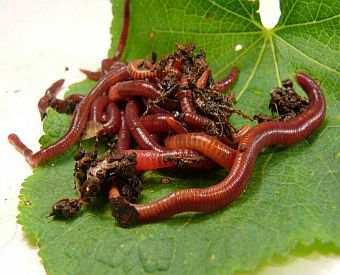The Single Strategy To Use For Red Wiggler Express
This overview will certainly introduce you to the red wiggler to include a deeper on dive on the varieties and information on breeding, life cycle, and reproduction. We'll speak about exactly how to preserve red wigglers and why they ought to be the best worm for the majority of composters. The red wiggler (binomial name: eisenia fetida) is the globe's most usual composting worm.
A study recommends that the 2 can produce hybrid children, a sensation which should otherwise be taken into consideration difficult in between a lot of worm varieties. Fun reality: The "fetid" component of the binomial name refers to what some say is a reeky secretion the red wiggler makes use of to fend off predators. I have actually been dealing with them for years and never noticed this! The anatomy of a red wiggler looks like that of various other typical earthworms; a long-segmented body starts at the pointed head and ends at a slightly-flatted tail.
4 Easy Facts About Red Wiggler Express Shown
The digestion tract is simple, starting at the mouth where the worm starts to eat its food before passing it on to the throat. The vocal cords is a muscular section which imitates a pump to pull food right into the mouth before pumping it out right into the esophagus. The esophagus is slim and thin-walled and acts as the "waiting area" for the gizzard.
Keep in mind: This requirement for grinding is why grit is recommended in a worm container. The worm features no indigenous grinding ability so the worm relies on consumed grit to assist grind its food in the gizzard. The stomach is where the very first chemical break down of food occurs with the aid of a protein-busting enzyme.

(https://deepbluedirectory.com/gosearch.php?q=Red+Wiggler+Express)The intestinal tract forms the lengthiest component of the worm and is where most of digestion takes location via enymatic processes. The castings ultimately pass via the anus at the end of the worm as pills covered with a biologically-rich mucous. (You're not eating I hope (Where To Buy Worms).) Red wigglers will intertwine around each other, exchanging sperm through their skin.
Within 42 days, these infant worms will reach sexual maturation as confirmed by the appearance of the clitellum. A fully grown red wiggler can be anticipated to live in between one to 3 years. The magnificent red wiggler might sometimes be used as a lure worm for smaller sized fish or as a healthy protein resource for hens and reptiles.
What Does Red Wiggler Express Do?
And as mentioned over, they are the most common composting worm in the globe. However why? Well there's probably not simply one reason. Instead, a mix of expense, hardiness, and convenience in a wide variety of temperature levels makes it the most appropriate composting worm for a lot of new vermicomposters. Red wigglers and their cocoons can survive in a large range of problems.
This is a typical technique among worm carriers that don't desire to take the chance of having the worms sit in a warm or cold stockroom over the weekend. Worm cultivators are not saving worms in a circumstance where they are prepared to deliver. The worms should be collected from their habitat initially, so growers will commonly set a Friday or Saturday deadline in order to harvest in time for a Monday delivery.
To save on shipping cost, you may want to see if there are any close-by "Mommy and Pop" shops through a Google search (Where To Buy Worms).
I call these the "Huge 3" variables of worm bin maintenance. If you keep all 3 within suitable varieties, after that there's not * that * a lot that can go incorrect with your container. As stated previously, red wigglers have a vast temperature level resistance. For ideal outcomes, maintain a temperature level of 55F-90F. Brief separations out of that temperature level range are great.
What Does Red Wiggler Express Mean?

For best results, you want to fire for concerning 60-70% dampness level. At the perfect dampness levels which is just under 70% that handful should barely yield one drop of liquid.


The European Nightcrawler, the larger cousin of the red wiggler, is simply as starved and likewise makes for a good bait worm. However it chooses a little a cooler environment than the red wiggler. The African Nightcrawler is a large composting worm and makes a lovely, granular actors.
The Indian Blue is starved, but additionally likes a warmer climate and it also shows a propensity to escape the container. The red wiggler is a sturdy worm and isn't as fussy concerning its environment. I like to call it the Ford Taurus of vermicomposting worms; you won't boast to your hardcore composting friends that you own them, yet they will certainly serve you well.
Red Wiggler Express Things To Know Before You Buy
Guaranteed to life 1/2 pound of hand arranged Red Wigglers/Compost with worms (+500 worms) in various stages of life from cocoons to develop worms in their all-natural environment/bedding. Hand sorted worms reduced down on the disturbance of the worms therefore guaranteeing real-time distribution. Red wiggler worms do not like resonances or light.
Comments on “The Definitive Guide to Red Wiggler Express”